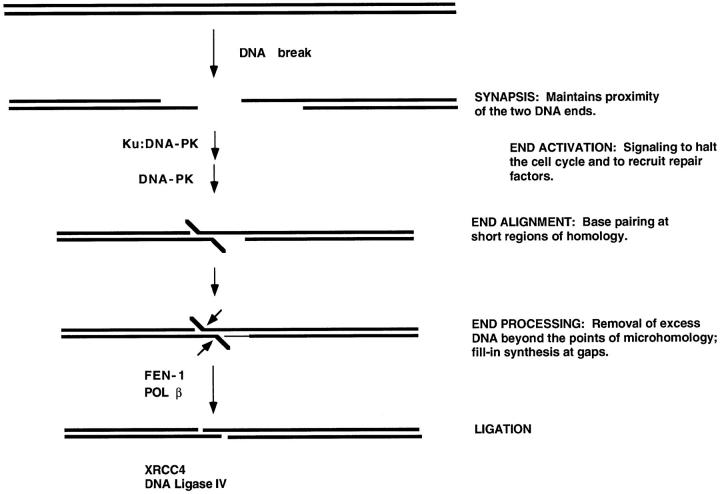Figure 2.
Model for the steps in nonhomologous DNA end joining. When a DNA break occurs, the ends must be held in proximity to permit subsequent repair steps to proceed and to align the two ends. This first step can be referred to as synapsis. Ku and DNA-dependent protein kinase (DNA-PK) bind to DNA ends during this initial phase, although it is not precisely clear how the synapsis occurs or what proteins specifically carry out this function. End activation can be used to refer to the signaling that recruits other repair components, configures the DNA termini for the subsequent steps, and alters the cell cycle until the repair is complete. End alignment can occur if there is terminal microhomology of one to four nucleotides, typically, between the two ends. This is an optional aspect, as NHEJ occurs regardless of microhomology. End processing refers to the removal of DNA by nucleases and the filling in of gaps by polymerases. Ligation is the final step, and it requires a ligatable nick on each strand. Some of the proteins known or suspected at each step are listed to the left of the arrows.

